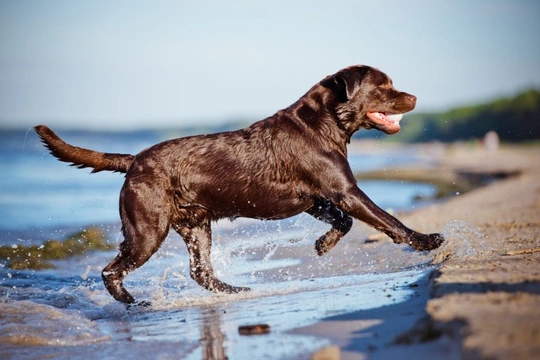
Why is my dog biting his tail?
If your dog seems to spend a lot of time biting, chewing or licking his tail, this usually targets the base of the tail and may occur for a wide range of reasons. Some of the causes for this are behavioural or habit-based while others have an underlying medical cause, but either way, biting the tail is usually indicative of a problem of some sort that needs to be resolved.
In this article, we will look at some of the most common reasons behind a dog biting their tail, and what can be done to resolve it. Read on to learn more.
Allergies and sensitivities
One of the most common reasons for a dog biting or bothering their own tail is allergies or sensitivities that lead to hotspots on the skin, which are sore, inflamed and often itchy. The base of the tail is one of the most common areas for hotspots to develop, which will often lead to your dog biting, scratching or otherwise bothering this particular area, which can of course make things worse.
Identifying the cause of the allergy and limiting exposure to it, or getting medication to help with it is the best way to resolve the issue.
Digestive issues
Biting, licking and scratching at the tail can also be symptomatic of digestive issues, specifically, those that affect the bowels and anal glands. If your dog has an anal gland impaction, infected anal glands or an impaction caused by constipation, biting at the base of the tail may be a symptom. Diarrhoea can also less commonly lead to the same result, so it is worth getting your dog checked out by the vet.
Neurological issues
One less common cause of tail-biting behaviour is neurological problems, but as these can be potentially serious, it is worth learning a little about them in order to rule them out if nothing else. All sorts of strange behavioural issues can manifest as a result of neurological problems, including obsessive tail biting and licking, or chasing the tail to distraction.
This can be indicative of a neurological disorder, or alternatively, an obsessive behavioural problem.
Boredom
Dogs can and will manifest all kinds of odd and unusual behaviours if they are extremely bored, and this is often referred to as “kennel syndrome,” as it is most likely to occur in dogs that are confined without stimulus or entertainment for a lot of their time.
This sort of behaviour often starts in adolescent dogs that do not receive enough exercise, as an attempt to entertain themselves and release some of their excess energy, which ultimately turns into an obsessive behavioural pattern. This is particularly likely to happen in dogs that have long tails and lots of energy, such as the Dalmatian.
Learned behaviour and abnormal behaviour
If all of the above problems have been ruled out, you may find that you are dealing with a learned behaviour or a specific behavioural problem rather than one with an underlying medical cause.
Even in cases where a medical condition led to the beginning of odd and harmful behaviours such as tail biting, this can also turn into a habit or obsessive behaviour that manifests long after the initial problem has been resolved.
This means that you will need to work to re-train your dog and direct their attention into other, more appropriate behaviours, and this should begin with staving off boredom, and ensuring that all of your dog’s exercise needs are being met.
Ensure that your dog is walked daily, enough to tire them out, and that you spend plenty of time and energy entertaining your dog, playing with them, and providing them with a busy, fulfilled life.
Redirecting such behaviour when you spot it occurring is also important, which means that if and when your dog begins to look as if they are going to start bothering their tail, you divert their attention into something more appropriate. Keep a special toy or favourite item of your dogs to hand, and when they begin to bother their tail, give it to them and spend a few minutes playing with them, in order to ultimately stop them from seeing their tail biting as a viable form of entertainment.
Once your dog looks at you or otherwise stops focusing on their tail, praise and reward them for doing so to build up positive associations in their mind with leaving their tail alone!
Ultimately, doing this should ensure that your dog replaces their tail obsession with something more appropriate, and stops bothering their tail altogether. You may well be able to manage this on your own with intensive work and attention, but if you do run into difficulties or your dog doesn’t seem to be changing their established behaviour pattern, you may wish to consult a specialist canine behaviourist for help.



